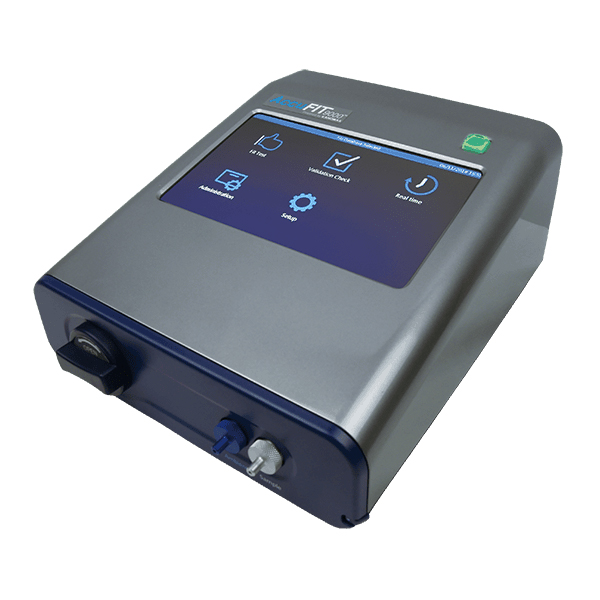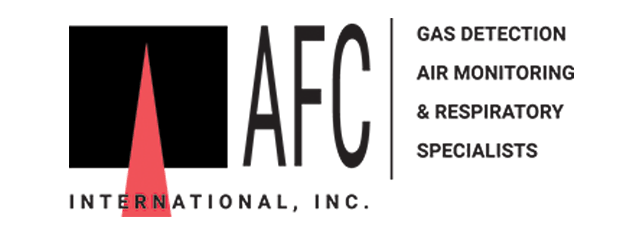Respirator Fit Testing
Respirator fit testing consists of several exercises designed to stress the respirator/face seal during which the test subject wears the respirator to be tested, and the ratio of the challenge agent concentration inside the mask to the ambient concentration is measured. This Ratio is the Fit Factor. In the CNC method ambient ultra-fine particulates are the challenge agent.

The AccuFIT9000 will test both N95 paper masks and all other types of respirators.
Respirators are a form of personal protective equipment that provide respiratory protection against airborne contaminants. Respirators can either filter the ambient air or provide clean breathing air in the case of Self-Contained Breathing Apparatus (SCBA) systems.
OSHA Requirements
OSHA requires that respirator fit testing be done on tight fitting respirators. If the respirator does not rely on a tight seal around the face (i.e., PAPRs), it does not require testing. Tight fitting respirators including Filtering Facepieces such as N95 masks require either qualitative or quantitative fit testing. Full Face respirators must be tested with a quantitative method because the minimum Fit Factor required for a Full Face respirator is 500, which is not achievable with qualitative methods.
Fit Testing Frequency
Respirator fit testing must be done prior to using a mask on the job. The fit test is valid for one year unless there are any major changes to the face of the user. This may include major dental work, facial scarring, a visible change in weight or facial surgery. The fit test is only valid for the particular make, model, and size of the respirator tested.
Qualitative vs Quantitative Fit Testing
Quantitative Fit Testing
A Quantitative Fit Test uses fit testing equipment to measure the leakage around the face seal of the respirator mask to give a “fit factor”. A minimum fit factor of 100 is required for half-mask respirators and a minimum fit factor of 500 for a full face piece respirator. An important consideration is the fact that a quantitative fit test does not rely on the test subject’s ability to sense the challenge agent nor his or her truthfulness.
Qualitative Fit Testing
Completely subjective test with no defensible metrics. Test relies on both the test subject’s ability to sense the challenge agent and his or her truthfulness in reporting whether or not the challenge agent is sensed. Cannot be used for full-face respirators.
It is essentially a pass/fail test which measures a subject’s ability to detect any leakage of gas challenge agent into the respirator based on taste, smell or reaction to an irritant by the user. Due to the fairly large differences in a person’s ability to sense these challenge agents, the accuracy of the test is extremely low.
Reprinted from AccuTek
